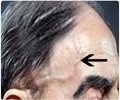A bioabsorbable, drug-eluting stent appears to be a safe and effective way of treating blocked coronary arteries, according to results from the open-label ABSORB study.
The results of the open-label ABSORB study have opined that a bioabsorbable, drug-eluting stent may turn out to be a safe and effective way of treating blocked coronary arteries.
Two years after implanting of an investigational, everolimus coronary stent in patients, boffins recorded no cardiac deaths, target lesion revascularizations, or stent thromboses, reports The Lancet.Commenting on the results, interventional cardiology specialist, Professor Franz Eberli from the University Hospital Zurich (Switzerland) and official spokesperson for the European Society of Cardiology, said:
"In addition to the ABSORB study presenting the longest ever follow up data for a bioabsorbable stent, the investigators used multiple imaging systems, including Optical Coherence Tomography.
"This technical advance has allowed them to get really detailed images of the intra coronary structures for the first time. What really impressed me was the smoothness of the vessel wall at two years, and images showing the stents had disappeared to a great extent, which was a very promising finding.
"The study showed an overall 19percent loss in luminal diameter at 18 months and an angiographic in- stent late loss of 0.48mm at two years. These results fall intermediate between those commonly seen for bare metal stents (which typically have an in stent late loss of 1.0 mm), and drug eluting stents (which typically have an in-stent late loss of 0.15 to 0.3 mm).
"But the upside of this bioabsorbable stent data is that patients don't appear to be getting any in-stent thrombosis here.
Advertisement
"This indicates that this bioabsorbable stent initially is not exerting enough radial force to keep the vessels perfectly open. The challenge facing stent designers is to achieve a balance between sufficient radial strength, and a structure that can be reabsorbed in a reasonable time period. Industry is already acting on this data and looking to produce stronger second generation bioabsorbable stents by developing novel stent designs that retain integrity and radial strength for a longer time period.
Advertisement
"This is a proof of principle study that teaches us a lot about the way bioabsorbable stents work and affect remodelling of the stented vessel segment.
But with only 30 patients included in the study, numbers are too small to show us if the technology is safe. Furthermore the study was only performed in patients with single de novo coronary lesions, who are considered by far the most straight forward cases. The study doesn't show us if the new stent will work in real world situations of patients with long lesions, calcification or bifurcations."
Source-ANI
TAN/L











